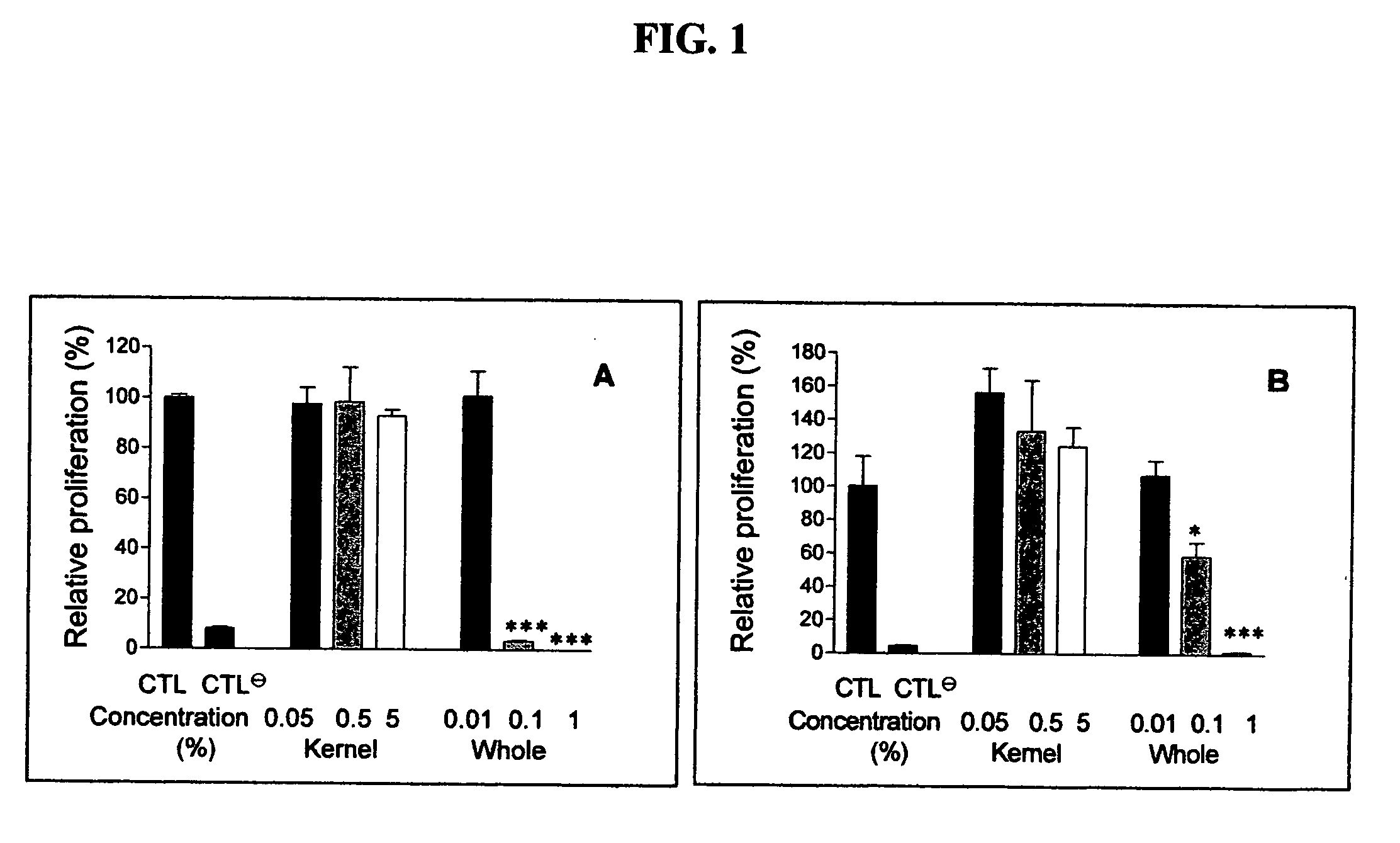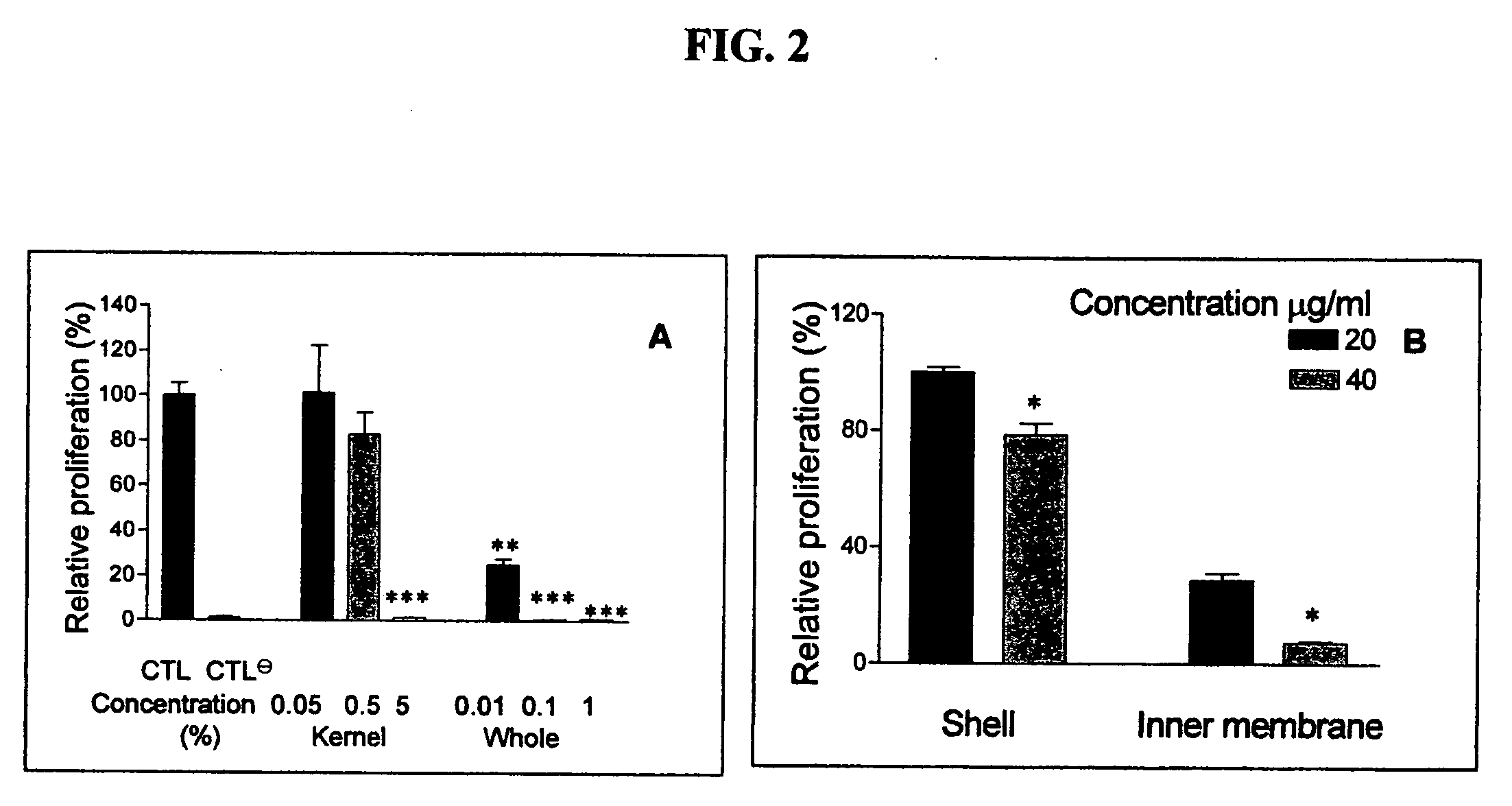Orally available light-independent antineoplastic compounds
an antineoplastic compound, light-dependent technology, applied in the direction of heterocyclic compound active ingredients, biocide, organic chemistry, etc., can solve the problems of ineffective morbidity and mortality from invasive and metastatic disease, high cost, and high cost of expensive methods, and achieve the effect of efficient and convenient administration
- Summary
- Abstract
- Description
- Claims
- Application Information
AI Technical Summary
Benefits of technology
Problems solved by technology
Method used
Image
Examples
example 1
[0059]This Example describes preliminary studies wherein a traditional (cultural) preparation of the extract from the seeds of the plant Livistona chinensis was tested for anti-angiogenic and anti-tumor activities in in vitro and in vivo assays. The initial preparation was prepared by boiling 300 grams of Livistona chinensis seeds for approximately eight hours to a final volume of 300 ml of water.
[0060]The following assays were used for the evaluation of the extract material and isolated compounds. For in vitro experiments, the crude extract was filtered with a 0.2 μm cut-off. In vitro sample preparation of purified extracts for dispersion into cell culture included the use of 5-8% DMSO in phosphate buffer. For in vivo experiments, the crude extract was diluted with drinking water at a 1:4 ratio. For the preparation of purified extracts to be administered to mice, TWEEN-80 was used as a detergent due to its neutral taste, odor, and high safety approval. Samples were typically dissol...
example 2
[0069]In this Example, an isolation procedure designed to identify NCE's that may be responsible for the strong pharmacologic activity in proliferation assays and animal models within the Livistona extracts is provided.
[0070]In order to identify NCE's from complex mixtures, an interface of bio-directed fractionation and liquid chromatography coupled to photodiode array and mass spectrometry (LC-PDA-MS) and NMR was used to track the compounds at each stage of purification, and identify the active compounds. The employment of these analytical techniques allows the unique correlation of biological activity with mass, resonance and optical spectra as a means of fingerprinting active constituents along the purification route. This approach allows early signatures, such as the enrichment of m / z values, resonance, and uv / vis signals corresponding to the active constituents with the result that multiple activities can be tracked. Considering that many natural products may have more than one...
example 3
[0082]In this Example, compounds and compositions comprising the active constituents were isolated, and compounds possessing the principle Formula I were tested for their antineoplastic effect in vitro and in vivo using mice transplanted with cancer cells. The formulations were prepared in accordance with methods and procedures known and understood by those skilled in the art.
[0083]Following the protocol of Scheme 1, the following data was obtained.
[0084]Steps 2-3. Subsequent to determining that the traditional preparation, using the complete seed shell, had exhibited strong pharmacologic activity in proliferation assays and animal models, attempts were made to extract the activity into individual organic neat solvents. The use of a neat solvent is necessary because it retains the greatest activity and significantly reduces the complexity of the mixture vs. traditional aqueous / alcohol extraction procedures. The rationale for the use of neat solvents is that each solvent varies in it...
PUM
| Property | Measurement | Unit |
|---|---|---|
| concentration | aaaaa | aaaaa |
| concentration | aaaaa | aaaaa |
| concentration | aaaaa | aaaaa |
Abstract
Description
Claims
Application Information
 Login to View More
Login to View More - R&D
- Intellectual Property
- Life Sciences
- Materials
- Tech Scout
- Unparalleled Data Quality
- Higher Quality Content
- 60% Fewer Hallucinations
Browse by: Latest US Patents, China's latest patents, Technical Efficacy Thesaurus, Application Domain, Technology Topic, Popular Technical Reports.
© 2025 PatSnap. All rights reserved.Legal|Privacy policy|Modern Slavery Act Transparency Statement|Sitemap|About US| Contact US: help@patsnap.com



